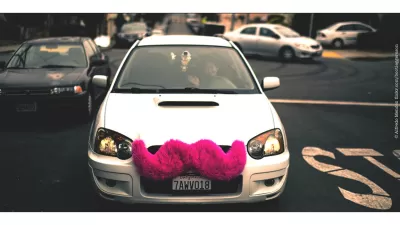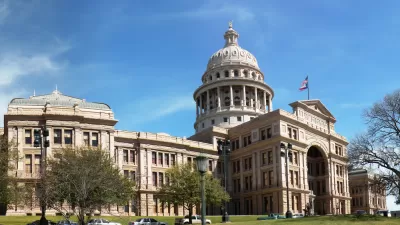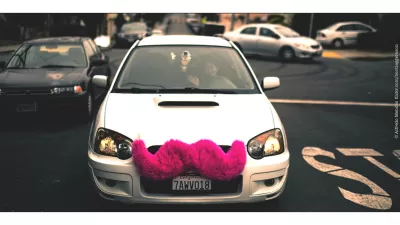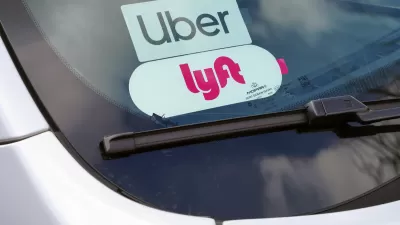In medium-sized cities and suburban areas, it's simply easier to drive your own car in most cases. But shared rides might still have a chance to catch on.

There's driving versus transit, and then there's driving versus rideshare. In places unsuited to transit, or where it's unavailable, are people accustomed to their cars willing to try sharing rides? That means not just taking Uber, for example, but being open to sharing an Uber ride with an unknown fellow passenger.
On Austin, Texas, Paul Mackie writes, "there is no problem parking anywhere in town, so driving is simply what Austinites do. It is a place with some options, like bikeshare and light rail, that make it easy to be a multimodal citizen in the core, but they are often lost against the ease of driving for people who live more than a few miles out."
However, services like a Mercedes-Benz on-demand shuttle pilot in Orange County, California have met with some success. According to the company's business innovation head, "Surprisingly, we were able to change behavior. People liked to be picked up in an on-demand shuttle in 10 to 15 minutes. And they started interacting better and opened a bigger sense of community in that area."
Mackie concludes with some of the reasons why riding (and driving) rideshare doesn't catch on. They include the cost of shared rides, lack of awareness that the option exists, low gas prices, concerns around liability, and lots of easy parking.
FULL STORY: Will people ever share rides in small and mid-size cities?

Study: Maui’s Plan to Convert Vacation Rentals to Long-Term Housing Could Cause Nearly $1 Billion Economic Loss
The plan would reduce visitor accommodation by 25,% resulting in 1,900 jobs lost.

North Texas Transit Leaders Tout Benefits of TOD for Growing Region
At a summit focused on transit-oriented development, policymakers discussed how North Texas’ expanded light rail system can serve as a tool for economic growth.

Why Should We Subsidize Public Transportation?
Many public transit agencies face financial stress due to rising costs, declining fare revenue, and declining subsidies. Transit advocates must provide a strong business case for increasing public transit funding.

How Community Science Connects People, Parks, and Biodiversity
Community science engages people of all backgrounds in documenting local biodiversity, strengthening connections to nature, and contributing to global efforts like the City Nature Challenge to build a more inclusive and resilient future.

Alabama: Trump Terminates Settlements for Black Communities Harmed By Raw Sewage
Trump deemed the landmark civil rights agreement “illegal DEI and environmental justice policy.”

Dear Tesla Driver: “It’s not You, It’s Him.”
Amidst a booming bumper sticker industry, one writer offers solace to those asking, “Does this car make me look fascist?”
Urban Design for Planners 1: Software Tools
This six-course series explores essential urban design concepts using open source software and equips planners with the tools they need to participate fully in the urban design process.
Planning for Universal Design
Learn the tools for implementing Universal Design in planning regulations.
City of Santa Clarita
Ascent Environmental
Institute for Housing and Urban Development Studies (IHS)
City of Grandview
Harvard GSD Executive Education
Toledo-Lucas County Plan Commissions
Salt Lake City
NYU Wagner Graduate School of Public Service





























